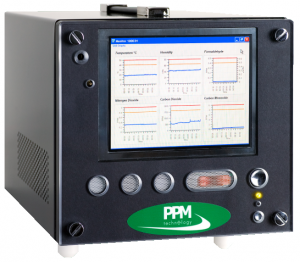
Formaldehyde Testing can prevent medium to severe ailments, or even cancers
Formaldehyde Testing
mr natural® environmental group provides precise testing for volatile formaldehyde levels. If you are concerned about formaldehyde levels due to health symptoms, odours or obvious formaldehyde sources, testing can provide quantitative proof through laboratory analytics or real-time results using highly accurate portable sensor meters. Testing can be performed in multiple locations or long-term analytics with data logging.
If you are pregnant and are in a new or recently renovated home or with new materials, we strongly recommend testing for the formaldehyde levels and applying due diligence. Over the last two decades, we have witnessed many miscarriages with Formaldehyde suspected as the primary cause. Children appear to be much more susceptible to high levels of formaldehyde resulting in an array of ailments.
Recommended Maximum Exposure Levels
Short term exposure is 123 µg/m3 or 100 ppb based on a 1 hour average. We believe this it too high and should be more than half. Long term exposure is set at 50 µg/m3 or 40 ppb based on a 8 hour average. People may vary in their sensitivity to formaldehyde and some may experience symptoms at lower levels.
When you factor in the respiratory rate of children, their proximity to surfaces out-gassing formaldehyde, and their small body mass, their exposure rate increases by 10 to 20 fold. The maximum exposure levels set by associations such as OSHA, WHO and EPA, are mainly considering adults in the workplace with an 8 hour or less exposure limit. In a residential environment, the exposure duration could be up to 24 hours.
 When formaldehyde is present in the air at levels higher than 0.1 parts per million (ppm), some people may experience health effects, such as:
When formaldehyde is present in the air at levels higher than 0.1 parts per million (ppm), some people may experience health effects, such as:- skin irritation
- watery eyes
- nausea
- wheezing
- coughing
- burning sensations of the eyes, nose, & throat
Health Risks of High Levels of Formaldehyde
Health Canada’s recommended levels also protect against the potential cancer risk from formaldehyde. Formaldehyde is classified as “carcinogenic to humans” by the International Agency for Research on Cancer (IARC). Industrial workers exposed to high levels of formaldehyde as part of their jobs have shown a higher risk of developing rare forms of cancer that affect the upper respiratory systems.
How to Remove Formaldehyde
Aside from time for the Formaldehyde to naturally volatilize, the only other method we have confirmed to effectively neutralize the off-gassing is operating a hydroxyl generator. Hydroxyls rapidly break down the volatile formaldehyde compound into safe compounds like CO2. This process will abate volatilized Formaldehyde in real-time and will decrease the off-gassing decay rate of the source significantly.
Working with mr natural® provides access to the most advanced and up-to-date information and solutions for formaldehyde reduction.
Main Sources of Formaldehyde
Most formaldehyde in homes comes from building materials, especially pressed-wood products, such as particleboard, medium-density fiberboard, and hardwood plywood panelling. Pressed-wood products that use adhesives containing urea-formaldehyde resins generally release higher levels of formaldehyde than those containing phenol-formaldehyde resins. Other sources may include furnishings, some paints and adhesives, varnishes and floor finishes and permanent press fabrics.
These products will emit less and less formaldehyde over time and can take weeks, months or even years to stop completely. Formaldehyde levels are generally higher in newly built or newly renovated homes. More formaldehyde is also released on hot and humid days, so levels are often higher in the summer.
Formaldehyde may also be produced as a by-product of combustion. Smoking is a significant source of indoor formaldehyde. It can also be released from wood stoves, and fireplaces, if they are not properly vented to the outside. Vehicle exhaust entering from attached garages or outside may also contain formaldehyde.
For more information about Formaldehyde testing, contact mr natural® environmental group.


